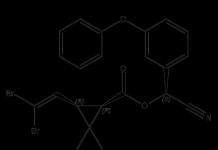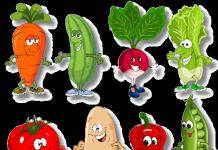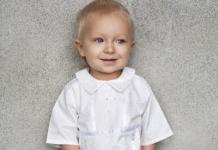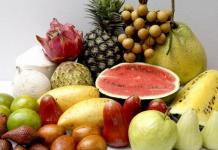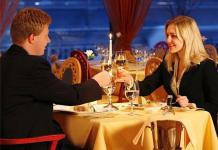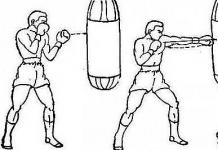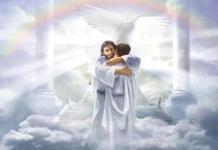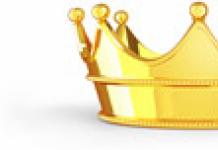Integration of educational areas:
"Artistic and aesthetic development"
"Cognitive Development"
"Social and communicative development"
"Physical development"
Tasks:
Educational area "Artistic and aesthetic development"
1. To form the skills of accurate work. 2. Exercise in drawing in an unconventional way, cause joy from the resulting image.
3.To form the ability of children to draw patterns from straight and wavy lines, create a rhythmic composition using non-traditional drawing techniques.
4. To consolidate knowledge of the names of colors. Cultivate aesthetic taste.
Educational area "Cognitive development"
1. To form the ability of children to understand natural relationships, to draw their own conclusions.
2. Promote the development of curiosity, thinking.
Educational area "Social and communicative development»
1. Form friendly relations with each other.
2. To form the ability of children to maintain a conversation on the proposed topic.
Educational area "Physical development"
1. Develop fine motor skills of the hands.
Methods and techniques:
Practical: finger gymnastics, surprise moment.
Visual: observations of people's clothes in winter.
- verbal: questions, children's answers, conversations about winter, about the upcoming holidays.
Materials and equipment : brushes, corks, gouache (yellow, red and green), jars of water, mitten blanks, napkins for each child, an envelope with a letter, pictures (presentation) depicting mittens.
Logic of educational activity:
| № | The activities of the educator | Activities of pupils | Expected results |
| 1. | Educator: - Guys, what holiday is approaching soon? | The children answer the question. (New Year) | |
| 2. | Educator: - Right! Today we received a letter from our kindergarten. Who do you think from? | Children listen to the question and answer from whom the letter came. | Development of coherent speech, vocabulary enrichment. |
| 3. | Educator: - Now I will read to you what they write to us: “Hello, guys! The new year is coming. All summer I was preparing for this holiday, knitting mittens, but did not have time to decorate them. Help me please. Snow Maiden" | The children listen to the teacher read the letter and agree to help the Snow Maiden. | Inclusion in the game situation. |
| 4. | Teacher: Look at the pictures, what do they show? ( slide show) | The children look at the pictures. | |
| 5. | Educator: - How are the mittens decorated? | The children answer the question. | Development of coherent speech, vocabulary enrichment. |
| 6. | Educator: - And we will come up with and draw our own pattern. Look, what color is your gouache on the tables? | Children name a color. | Children's knowledge of colors is consolidated. |
| 7. | Educator: - Before we start drawing, we need to stretch our fingers. | Finger gymnastics. | The ability to perform precise movements in accordance with the text has been formed. |
| 8. | Educator: - Well done! Now watch and listen how we will draw. - I'll take the brush correctly, with three fingers at the metal "collar". I wet the brush: the brush went to bathe "boo-boo-boo." I will remove excess water on the edge of the jar: “drip-drip” - Say hello to the paint. The brush touches the paint only with the hair part, the “collar” must remain clean. - Draw a straight line. I put the brush on the left at the very edge of the mitten and draw a line to the right to the other edge. If the brush has become dry, it must be wet again and take the paint. What needs to be done to draw in a different color? (wash brush) — Then I draw a wavy line. I deviate from a straight line. I put the brush on the left and draw a wavy line. - Let's show with a dry brush how we will draw lines. | Children show imaginary actions, and the teacher controls the correct position of the brush in the hand, the direction of movement. They show first in the air, and then on mittens. | Trained to work independently. The development of fine motor skills. |
| 9. | Educator: - And now look how you can decorate our mittens: I take the cork in my right hand, with my left hand I hold the sheet. I'll dip the cork in the paint and put prints on the mitten one, another, another. If the paint on the cork is over, I dip the paint again. Here is the mitten I made. | Doing work by children. | Development of cognitive activity. |
| 10. | Educator: - So we decorated the mittens. What did they get? | Children answer the question (they turned out bright, beautiful, smart) | Trained to draw their own conclusions. |
Finger gymnastics:
Masha put on a mitten:
Clench your fingers into a fist
— Oh, where am I doing?
I don't have a finger, I'm gone
I didn’t sing in my little house!
Unclench all fingers except the thumb. Palm back side up.
Masha took off her mitten:
- Look, I found it!
Seek, seek, and you will find.
Again, clench your fingers into a fist and unclench all fingers.
“Hi, little finger, how are you?”
With the fingers of the other hand, say hello to the other fingers.
GCD on "Artistic and Aesthetic Development"
Topic: "Painting nesting dolls"
Target: acquaintance of children with decorative painting of a folk toy - matryoshka
Program tasks:
1.Educational
To consolidate children's knowledge about the history of the creation of Russian wooden nesting dolls, about its characteristic features;
Continue acquaintance with the work of Russian folk art craft: painting matryoshkas;
To consolidate practical skills in drawing elements of the Semenovskaya painting;
2.Developing
Develop thinking, fine motor skills of hands, artistic taste;
To develop the creative abilities of children through familiarization with folk art and applied art;
To develop independence in inventing a pattern of a sundress for nesting dolls.
3.Educational
Develop the ability to work in a team;
To cultivate independence, accuracy, interest and love for folk toys;
To cultivate respect for the creativity of Russian craftsmen.
Integratable educational areas:"Cognition", "Communication", "Socialization", "Music", "Physical culture", "Health".
Preliminary work: the teacher's story about the history of nesting dolls, their manufacture and painting; examining toys - nesting dolls and illustrations depicting Semyonovsky, Zagorsky, Polkhov-Maidansky nesting dolls, comparing them in appearance, appearance, painting; reading poems, riddles about nesting dolls.
Methodical methods:
Verbal
Game
visual
Demo material: presentation "Russian matryoshka", easel, silhouettes of nesting dolls, illustrations with elements of different painting techniques, audio recordings "Russian folk melodies"
Handout: matryoshka templates, paints, brushes, cotton buds, woolen thread, jars of water, napkins.
Lesson progress:
1. Organizational moment.
(A folk melody sounds at the beginning of the lesson).
Knock on the door. The teacher will bring in a doll in a Russian folk costume. She has an envelope in the rivers.
Educator: Guys, look what a beautiful doll, and she has an envelope in her hands, she probably brought us a letter. Let's read it.
The children sit on chairs, the teacher reads the letter: “Hello, dear children. Masters of Russian folk toys are writing to you. We have a lot of orders and we can not cope. We want to ask you to help us make Russian folk toys"
2. Problem situation.
Educator: Guys, what kind of Russian folk toys can we make with you?
Children's answers.
3. Communication of the topic and purpose of the lesson.
Educator: I have matryoshka blanks, but they are not painted. I suggest you write them down. But first, let's remember what nesting dolls are and how they are painted.
4. Repetition of the studied material
(slide 2)
There are dolls that have one name - Matryoshka
(slide 3)
Why is this doll so loved? Because she is special. Disassembles into two parts. Take off the top and you will see - there is still a doll inside. The same nesting doll, only smaller, and also opens.
(slide 4)
The first matryoshka appeared almost a hundred years ago. Toy maker V. Zvezdochkin from the city of Sergiev Posad made a disassembled doll out of wood, and artist S. Malyutin painted it. The result was a girl with rosy cheeks, with flaxen hair, in simple peasant clothes - in a sundress, an apron, in a scarf with flowers. With his right hand, he presses a black rooster to himself.
(slide 5)
Why is the matryoshka so called?
In the old Russian village, the name of the common and favorite female names were Matryona, Matryosh. This name means "mother". Therefore, they called the doll Matryoshka.
(slide 6)
Matryoshkas are made mainly from linden, birch, alder, and aspen. Masters grind matryoshkas starting from the smallest.
(slide 7)
The ready-made figurines of the craftswoman are painted with bright colors - they “dress” the doll in colorful sundresses, colored scarves. And then the most difficult thing - they draw a face: eyes, crimson lips, a blush will bring - and the matryoshka “came to life”. And for liveliness and brilliance, they are varnished.
(slide 8)
Matryoshkas were painted differently in different villages.
Sergiev Pasadsky - stable, thick-sided. In colorful aprons, in red, blue, green scarves.
(slide 9)
Matryoshka comes from Semyonov - in colorful aprons, yellow-red half-shawls.
(slide 10)
And in the village of Polkhovsky Maidan, raspberry berries and flowers, green leaves are “scattered” on a yellow background near nesting dolls. And article they are slimmer.
(slide 11)
Sometimes nesting dolls are unusual - sometimes a large peasant family.
(slide 12)
Those familiar to all the heroes of fairy tales.
(slide 13)
But still the most beloved was the matryoshka. Today it is known all over the world, and is given as a keepsake of our country. She became a Russian souvenir.
5. Physical minutes.
(Musical round dance)
6. Practical part
Educator: I suggest you paint our nesting dolls in the Semenov style. Let's start painting with a scarf. What color?
Children's answers.
Educator: We place small flower buds along the edge of the scarf. We will draw them by sticking a cotton swab. Matryoshka's apron is painted with roses, we can draw roses with woolen thread. Remember how we draw them?
Children's answers.
Educator: Now we take a brush and paint the bottom of the matryoshka. While we were painting the bottom, the roses dried up and complement them with green leaves and scarlet flowers. Round face, bright blush, black eyebrows, small mouth. The same image of a Russian beauty was sung in Russian songs and fairy tales.
7. Summing up.
(Organization of an exhibition of children's works)
Well done kids, everyone did a great job. When the paint dries, we will send the matryoshkas to the craftsmen.
ANALYSIS OF DIRECTLY EDUCATIONAL ACTIVITIES ON EDUCATIONAL FIELD «Artistic and aesthetic development»,
Direction: Visual activity. Drawing.
Targets: demonstrates the ability to hear others, masters the basic movements, can control and manage his movements, masters the methods of activity, shows initiative and independence in various activities.
Target: exercise in the ability to make sketches;
to consolidate the ability to convey characteristic features, specific
features, reflect them in the drawing;
educate interest in the work of artists, respect for their work,
creative self-realization;
promote a positive attitude in children.
Material: reproductions of paintings: I. Repin "Nadya Repina, the artist's daughter", B. Kustodiev "Portrait of I. Kustodieva with the dog Shumka", A. Venetsianov "That's the father's dinner", I. Glazunov "Verochka", A. Shilov " Mashenka Shilova”, group photo; pencils; 1/2 of an album sheet, a sheet of A2 paper, a diagram of a step-by-step drawing of a person's face, samples of a teacher - portraits of a girl and a boy.
preliminary work. Acquaintance of children with portraiture, its features, with the fact that artists paint portraits using different materials. Reading fiction about professions.
Design of the spatial subject-developing environment of the GCD in the group:
-exhibition of reproductions of children's portraits,
A fairy tale character is an artist (surprise moment).
Literature:
1. The main exemplary general education program "From birth to school", ed. N. E. Veraksy, T. S. Komarova, M. A. Vasilyeva // 2016.
2. Comprehensive classes in fine arts /preparatory group, ed.-comp. O.V. Pavlova. - Volgograd: Teacher, 2016.- 191s.
3. Visual activity in kindergarten (6-7 years old), GEF preparatory group. Komarova T.S.
Necessary game, educational and material, and aesthetic conditions were created for the NOD. GCD included the organizational part; main and final parts. All of them are united by a single plot - the game "Transformation into Artists".
In the first part - organizational - a minute of entering the "Friend" day was held to create game motivation in order to attract and focus the attention of children on the task, to introduce the topic. The duration of the first part is 4 minutes.
In the main part of the activity, cognitive, social - personal, artistic and aesthetic tasks were solved. For their implementation, the main activity of the preschooler was used - the game. As well as the following methods and techniques: game situations, artistic expression, posing problematic questions, search tasks, visual aids, showing the mode of action (stage-by-stage drawing of a portrait). The game method and an individually differentiated approach were used in teaching preschoolers to draw. The task of the teacher is to emotionally set up children for playing activities, to liberate them, to direct them in time, to interest them.
The children coped with the tasks of this part of the activity, they worked with desire and interest.
Creating a favorable environment, emotional mood, ease, maintaining the interest of children throughout the activity, organizing children: the ability to obey certain rules of behavior, independence, conscious discipline, active auditory attention, concentration when performing tasks - speaks of the quality of mastering GCD material by children.
The duration of this part was 18 minutes (at the 16th minute of the NOD, a physical minute “The wind is blowing” was held).
There are poorly prepared children in the group, since they did not attend preschools until the age of 5 and did not conduct educational activities with them. With such children, it is necessary to use not only an individually differentiated approach, but to organize such a developing environment so that the child himself becomes the initiator of creative activity. We try to bring something new, diverse, developing and teaching to GCD.
In the third and final part, we summarized the knowledge of children about the genres of painting, about an interesting transformation. In order to maintain the interest of children further, it was proposed to cut out ready-made drawings-portraits and arrange them in a collective panel - a common portrait of the children of the group. The duration of this part of the lesson is 7 minutes.
In the final part of the GCD - a reflection was carried out, a collective assessment of the activities of children, drawings. The material for the NOD was selected at an accessible level for children, corresponded to their psychological characteristics and was rational for solving the goals and objectives. The children were interested. They were active, attentive, felt comfortable. All this is confirmed by the results of activity and reflection.
In general, directly educational activity has reached its goals, we are satisfied with the results of the activity. The only omission is that finger gymnastics was not performed. All GCD elements are logically united by a common theme.
This structure of the lesson is quite justified. Since each part of the lesson is aimed at solving certain pedagogical problems and offers a choice of adequate methods and techniques. The content of the lesson corresponded to the set goal and objectives. Activities at GCD are characterized as joint, creative, individual.
1. Verbal (questions to children, clarification, encouragement);
2. Visual and demonstration (stage-by-stage picture-scheme);
3. Practical (step by step portrait drawing)
4. Game (a minute of entering the day "Friend", playing out the situation "Turning into artists" physical minute);
5. Methods of control (analysis of completed tasks, evaluation of performance results);
The following technologies were used in the GCD process:
Gaming activity;
Activity approach;
Developmental learning technology;
Organization: MBDOU kindergarten<<Ручеёк>>
Location: Rostov region, Zimovniki village
Synopsis of GCD
on the topic: "I draw the sea, blue distances ..." using non-traditional drawing techniques - blotography and landscape monotype .
Prepared by:
senior teacher
uneven-age group Kurchatova S.V.
April 2017
Synopsis of GCD
on artistic and aesthetic development in the senior group
on the topic: "I draw the sea, blue distances" using non-traditional drawing techniques - blotography and landscape monotype .
Target: introducechildren with non-traditional drawing techniques - blotography with appliqué elements and landscape monotype.Develop creativity and independence in children.
Educational tasks:
- Continue to form children's ideas about the sea and its inhabitants.
- Teach them to creatively and independently reflect their ideas about
the sea and its inhabitants, using the technique - blotography and monotype,
with application elements.
- Expand and enrich children's vocabulary.
Development tasks:
To develop a cognitive interest in nature, imagination, color perception, a sense of composition, creativity, communication skills.
Educational tasks:
To cultivate curiosity, responsiveness and artistic taste and interest in the fine arts.
Material for the lesson:
for every child
- album sheet,
- Palette with 6 colors (yellow, blue, turquoise, blue, green, red),
- Napkin,
- Brush
Demonstration material:
- Cutaway pictures depicting transport,
- Presentation "Sea Depths"
- turtle toy
- colorful ribbons
- Soft modules for building a ship
- chest
Using an audio recording of the composition "Chunga-Changa", music on a marine theme.
Preliminary work:
Examining illustrations depicting marine animals, talking about the life of marine life, listening to the music of the sea, reading fiction and educational children's literature, artistic and productive activities; drawing "Aquarium and its inhabitants", application "Aquarium fish", didactic games "Who lives where", "Habitat".
Lesson progress:
Educator: The teacher and the children are scattered in a group
Guys, today an amazing story happened to me. In the morning, the phone rang in our group. I picked up the phone, and who do you think called me? Guess? ( Children's answers)
I would never have guessed who it could be either. And a little turtle named Droplet called me. She called from a small tropical island in the warm sea. And you know, guys, she said that she would really like to have a lot of friends. And she invited us to visit.
Shall we visit? Hey guys, do you know what an island is? (children's answers)
Educator: Yes, an island is where the sea is, it is a small piece of land surrounded by water.
Guys, in order to find out how we can get to our island, we need to collect these split pictures (Children in a pair collect cut pictures of a motorcycle, train, plane and ship)
- Motorbike. What did you get? ( children's answers)
Can we ride a motorcycle? And why? ( children's answers)
- Train. And you have a train. By train, can we sail across the sea to the island? (children's answers) Of course not (children's answers)
- Airplane. How can we get to the island? ( by plane)
Right by plane we can get there. And if we fly by plane, what can we see from this plane? (children's answers)
- Ship . What else can we do on our journey? What can we see along the way?
Educator: Everything is decided, we will go on a trip by ship to see a lot of interesting things on the way to the island. But we don't have a ship.
Guys, you and I can put it on our carpet. Look at our wall there are soft modules. Add a ship out of them. What should our ship have?
The teacher coordinates the activities of the children in the construction of the ship.
What should our ship have? (children's answers) I think our ship should have a nose? Yes, but should the ship have sides? Yes, here they are boards ( if necessary, corrects the construction of children) It is necessary to build firmly, why do you think? ( children's answers) Yes, so that the water does not cover us, we build strong sides on the right, but on the left? (they build and negotiate - this is the left side, this is the starboard side). So, and this will be the stern of our ship. Guys, look from above, did our ship turn out?
Educator: Yes, well, then I think we should all come to our deck. Please come in and sit down. We sit down comfortably, because we want to see a lot on the way to the island. And we look ahead.
Educator: Guys, (says a poem)
Educator: Well, take me with you, okay. Yes, guys, we are already on the high seas.
PRESENTATION
Music on a marine theme sounds softly.
(Slide 1 with a picture of the globe.)
Educator: Look ahead, what we see is yes correctly the globe. (Slide 2 with a picture of the surf.)
And here are the sea waves, we now heard the sound of the wave, the sound of the surf of the sea waves, the sound of water.
(Slide 3 with a picture of the ship)
And here is our ship, on which we are sailing to our island, where a turtle named Droplet is waiting for us .
(Slide 4 with a picture of dolphins)
Look who is it? (children's answers).
Yes, these are dolphins, they love to swim near ships, and they often help people. Dolphins are considered the most intelligent animals, they even know how to communicate with each other using various sounds in conversation: clicking, whistling.
(Slide 5 with a picture of a whale)
Educator: Look, who is this? Yes, this is a whale, the largest inhabitant of the sea, This is the largest animal in the world. When it floats, a fountain of water is visible in the sea, and here in this picture above the water only its tail is visible.
(Slide 6 with a picture of a shark)
Educator: Look, it's a shark. This is the most dangerous inhabitant of the sea. Dangerous predator. The shark swims very fast. And she has many, many teeth. Often they are called bloodthirsty, toothy, evil. Their teeth are in six rows, and sharp as a saw. You have to be very careful.
(Slide 7 with a picture of fish)
The teacher recites the poem:
|
Educator: Look, these are fish. How beautiful, what color are they ( children's answers) They live where it's shallow.
(Slide 8 depicting sea urchins)
And these are sea urchins what colour hedgehogs in the picture). With the help of needles, sea urchins not only protect themselves from enemies, but also move, like on stilts, along the seabed.
Educator: We sail on, who else will we meet?
(slide 9 with the image of fish and algae)
Notice the color of the algae? ( What color children's answers) Beautiful?!
(Slide 10 with an image of an octopus)
Educator: Let's look ahead. Who is this? That's right, it's an octopus, what color is an octopus, yes they come in different colors. Why do you think it got such a name - an octopus? (children's answers).
The octopus was named so because eight limbs extend from its short body. Its soft body has no bones and can freely bend in different directions. In case of danger, they have the ability to change color very quickly and become the same color as the ground.
(Slide 11 with a picture of jellyfish)
Educator: . Look, look who we see - jellyfish. These are mysterious and incredibly beautiful inhabitants of the seas and oceans. But among the jellyfish there are very dangerous ones. They can cause a painful burn and we will not touch them with our hands. In fact, jellyfish are beneficial, they filter and purify sea water.
(slide 12 depicting starfish)
Educator: . Look, is this? Yes, they are starfish. How many rays does a starfish have? Let's count. Five! And what color, yes very unusual color, beautiful! Oh guys, this is probably our friend Droplet!? which is waiting for us. We are already sailing to the shore, to our island.
(Slide 13 with a picture of a turtle)
Educator: Guys, look, and turtles are born from an egg, what a little turtle. We swim further.
(Slide 14 with a picture of the island)
Educator: And here we are on the island. Warm sea, palm trees rustle, hot sand underfoot. Look to the right, to the left, somewhere here is our turtle. Where is our friend? And here is our friend Droplet.
Educator on behalf of Droplets : “Hello guys, how glad I am that you came to visit me. My name is Kapelka, how are you? (children get to know each other, say their names) Oh, oh, who hasn't stroked me yet?
When you guys sailed to the island, what did you see? (children's answers ....)
Educator: Guys, I have a request for you, and you could draw marine life for me, and it would be more fun for me to live on my island. Will you draw?
Educator: Guys, please come to the tables.
And how do you think we can draw the sea with you? How can we draw the sea? ( children's answers - with a brush, pencils, finger, felt-tip pens ...)
Educator: Today I want to tell you about a new way that we will draw, look carefully at your tables. Looked? Please note that you have a palette in front of you, what colors are on it ( children's responses). Have you seen such colors in the sea?
Today we will study a new technique called blotography with appliqué elements, look at your trays there are figures prepared for gluing. These are figurines of what inhabitants of the deep sea? (children's answers) Amazing.
So, guys, we have an inkblotography with you, This is when a drop of paint drips - falls on a piece of paper folded in half. ... Then when you finish listening to me, dip your brushes first into one, then into the paint and start dripping on one half of your sheet, all over the half. You will use the colors you like. After you have dripped all the colors, we will fold our sheet in half and iron it well - well with a napkin. And then we'll open it and see what we got.
Guys, but before we start drawing, we will knead our fingers, show all your hands, and now fingers, that's what fingers. rub your hands and repeat after me.
Finger gymnastics "I draw the sea"
Educator: Guys, rub your palms, fingers, and now focus, remember what I told you, take your brushes, dip them in jars of water and start creating, you are real artists and each of you will have completely different pictures on a piece of paper that are not similar to each other on a friend, but I'm sure they will all be very interesting and beautiful.
(music starts playing softly)
Educator: First, dip into a jar of water, but take the paints that you really like, dip the brush well into the paint. More water so that the drops are greasy - greasy.
Individual assistance in the drawing process
So, now leave the brush on the palette, bend the sheet and swipe, smooth the sheet with a napkin. Good good. Guys, look at what beautiful pictures you have turned out, now you just have to stick on marine life. Stick directly to the paint.
Guys, while your paintings are drying, go wash your hands.
The paintings are drying, and now we will rest and dance and give our Droplet an incendiary dance. (Handing out ribbons)
Educator: We come up with movements that we will give to our Droplet.
(distributing ribbons) Chung-Chang music is playing.
Educator: We come up with movements that we will give to our turtle. Different, different movements. Have fun!
Guys, the music subsides, and we all lie down on the seabed, close our eyes, everyone turns into starfish,
Relaxation music sounds
Lie down, who is on the tummy, who is on the back as convenient, spread the arms. Take a deep breath in through your nose and out through your mouth . We listen to music. (several times, the main thing is that the children are comfortable to lie down and breathe freely)
Educator: And now the eyes are opening, as soon as I count to five, you will all sit on the carpet. Listen to one, two ... and everyone sat on the carpet - five.
Guys, let's remember where we visited today? ( children's answers)
Who did you see while sailing to the island? (children's answers) Yes, we saw an octopus. And how can they be called in one word? Yes, we saw marine life.
Educator: Let's go to the blackboard and look at our marine paintings. What pictures did you get? (children's answers). What did you draw them with? (children's answers).
And you know, our turtle Droplet prepared a surprise for us. Close all eyes now. Takes out a chest
Educator: Open your eyes opens the chest and consider the surprise). Let's say thank you to Droplet for the gift. Now let's say goodbye to her, see you again, turtle!
Used Books:
1. Veraksy, N. E. From birth to school. Approximate basic general educational program of preschool education [Text] / N. E. Veraksy; ed. N. E. Veraksy, T. S. Komarova, M. A. Vasil’eva. - M. : Mosaic-Synthesis, 2011
2. Davydova, G. N. Non-traditional drawing techniques in kindergarten. Part 1: textbook - method. allowance [Text]
3. Kazakova, R. G. Drawing classes with preschoolers: textbook - method. allowance [Text] / 4. Tskvitaria T. A. Non-traditional drawing techniques. Integrated classes in the preschool educational institution. - M .: TC Sphere 2011 (Educator's Library)
5. Komarova T.S. Children's artistic creativity. Methodical manual for educators and teachers. – 2nd edition,. M.: Mosaic-synthesis, 2008
Irina Potapova
Synopsis of GCD« Artistic and aesthetic development»
Subject« Workshop of little designers»
Goals: development creative abilities of each child by means of non-traditional drawing techniques.
Educational. Introduce children to the profession designer. To expand children's ideas about furniture, household appliances, indoor plants, wallpaper as their functional use in creating the interior of a living space. Diversify the visual activities of children by inviting them to participate in the creation design wallpaper to decorate rooms in the game "House for Misha and Masha", based on the cartoon "Masha and the Bear".
Educational. Continue develop children's ability to draw with non-traditional techniques drawing: "press and print", "drawing with colored semolina", "scratching". Improve application skills. Develop creative thinking, spatial perception of objects, the ability to work in a team of peers, with a teacher.
Educational. Cultivate the desire to be careful when working with different art materials. Actively and benevolently interact with the teacher and peers in solving the tasks.
Preliminary work. Create albums « Interior Design» , "Wallpaper World" Children's stories from personal experience "My room". Teaching non-traditional drawing techniques in "Creative workshop» . Watching a cartoon "Masha and the Bear" series "Repair".
Materials.
For the teacher: didactic game « Design» , presentation master class"Appliqué of cut threads", presentation "Profession designer» . Samples of wallpaper for children made in various non-traditional techniques.
For children: oilcloths, gouache of primary colors mixed with paste, foam rubber stamps, various configurations, lids, jars of yogurt, silhouettes of an airplane and a balloon, 6 pieces each, cardboard combs, A4 white cardboard sheets, A4 white paper.
Technical equipment: laptop.
Course progress.
Educator Yesterday at the post office I received a parcel for you, you are interested to know what is there.
I take out an envelope. It's so big, let's open it.
“Dear friends, hello. Masha is writing to you. Misha and I made repairs, but we can’t agree on what furniture to choose for the rooms. We have them some: two bedrooms - mine and Mishina, living room, kitchen. I am sending you photos of our rooms and pictures of furniture that we liked. Help put everything in its place. Thank you".
I get a didactic game « Design» . These are the rooms of Misha and Masha, the living room, the kitchen.
We will divide into teams of two people, each team will equip their room with furniture that they think is suitable, decorate it with flowers, books and other items.
During the game, I pay attention to the benefits of flowers, books, toys in decorating rooms. Teachers post pictures on "kitchen room". After everyone completes the task of the room, they are fastened to each other.
Educator Arranging furniture in rooms, decorating them, we were engaged in design.
Presentation.
Design- this is an English word, in translation it means “to conceive a drawing, a product. Designer - artist - constructor engaged in creative activities. He can create things with his own hands: beautiful clothes, plants flowers by combining them in color so that you want to admire them. Decorates rooms, in houses, picking up beautiful objects and wallpapers.
That's just the wallpaper in the rooms and no. I invite you to go to school small designers and draw beautiful wallpapers. Masha and Misha have already chosen samples. Takes out of the envelope. Our wallpapers will be unusual, you can't buy them in the store.
Children who will draw this wallpaper for the living room with Christmas trees and mushrooms, made with foam rubber dies?

For Masha's room, who will draw a pattern with colored semolina and an imprint of lids of different sizes?

Wallpaper for Misha's room, decorate with pictures of air transport.


You must observe one important rule: put your wallpaper sheets side by side and do the same pattern together. Everything you need for work is prepared for you on the tables.
Guests will create elegant soft rugs using the technique "cut thread appliqué".

I give the technological map, the material prepared for work lies on the table.
And I will direct the work and help you all. I turn on the music.
As the work progresses, the finished wallpaper is glued onto white cardboard. "Walls" connected in pairs, forming a corner of the room.
Educator. The wallpaper turned out very beautiful, and our guests have soft, fluffy rugs.

We will arrange the furniture and play together with our favorite toys Masha and Misha.

Now in our group there is a game made by ourselves.




